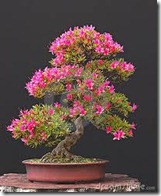 Bonsai – An Exercise In Patience
Bonsai – An Exercise In Patience
If you are new to the practice of bonsai, it won’t take you long to realize that patience, patience, and more patience is king when it comes to developing a tree worthy of presentation. Bonsai trees of the utmost caliber often take several years to form. During this time, it is the job of the caretaker (you) to put the bonsai in a position to succeed.
First, let’s talk about watering. Depending on the seed you are using, watering can be a painstakingly tedious task or a relatively manageable one. Conifers (cone-bearing trees such as pines or cypresses) can be a good seed to use for your first bonsai. These trees generally require less oversight of moisture levels in the soil. There are two extremes of soil moisture, soggy and bone-dry. Watering in excess might seem harmless, but it can rot the roots of your bonsai due to the presence of fungi. Intuitively, trees need water to survive, so if they are deprived of this, it won’t take them long to show signs of death. Some trees, like evergreens, can be tricky in this respect. While they might handle dry conditions reasonably well, they will often still appear healthy months after their root system has been dehydrated to the point of ruin.
Pruning, repotting, and shaping are also essential to maintaining a bonsai. Remember, you’re growing a full-size tree in a tiny pot. Nature didn’t intend for it to work like that, so in order to succeed, you’re going to battle against nature. There are several techniques you’ll need to employ to achieve this. Depending on the fragility of the tree’s branches, you’ll want to either use metal wiring or regular trimming to help form the tree into the shape you desire. Left to its own devices, trees will go haywire and grow in every direction. In order to form a visually appealing bonsai, it is essential to guide its growth. Wiring a tree is a fragile process (noticing a theme here?) The purpose of wiring is to shape the tree. However, if you wrap the wire (you can use copper or aluminum) too tight, it will choke that portion of the tree and kill it. Too loose and the wire will be ineffective in shaping the tree.
Wiring should not be used for especially brittle trees whose twigs are prone to snapping. These trees are too stubborn to follow the lead of some well placed wiring. Instead, you’ll want to regularly trim and prune the branches to achieve the desired result.
All forms of bonsai trees need to be repotted and root-pruned at one point or another. Depending on the type of tree, some can go years before needing repotted, while others with aggressive root structures might need repotted more than once per year. Curtailing the root structure is essential to a bonsai’s success. If left to run wild, the roots will overtake their small container and the tree will eventually die due to a lack of moisture absorption.
If you are new to bonsai, don’t fret if at first you fail. All bonsai masters failed too before perfecting their craft. Trees are a life form not different than any other in that they need special care and attention in order to grow and flourish. Bonsai masters have achieved an ability, you could even call it a sixth sense, to “feel†what the tree needs. With time, you can develop this intuition as well.

Deprecated: strpos(): Passing null to parameter #1 ($haystack) of type string is deprecated in /home/agriviek8Qv/agriviet.net/public_html/wp-includes/comment-template.php on line 2522